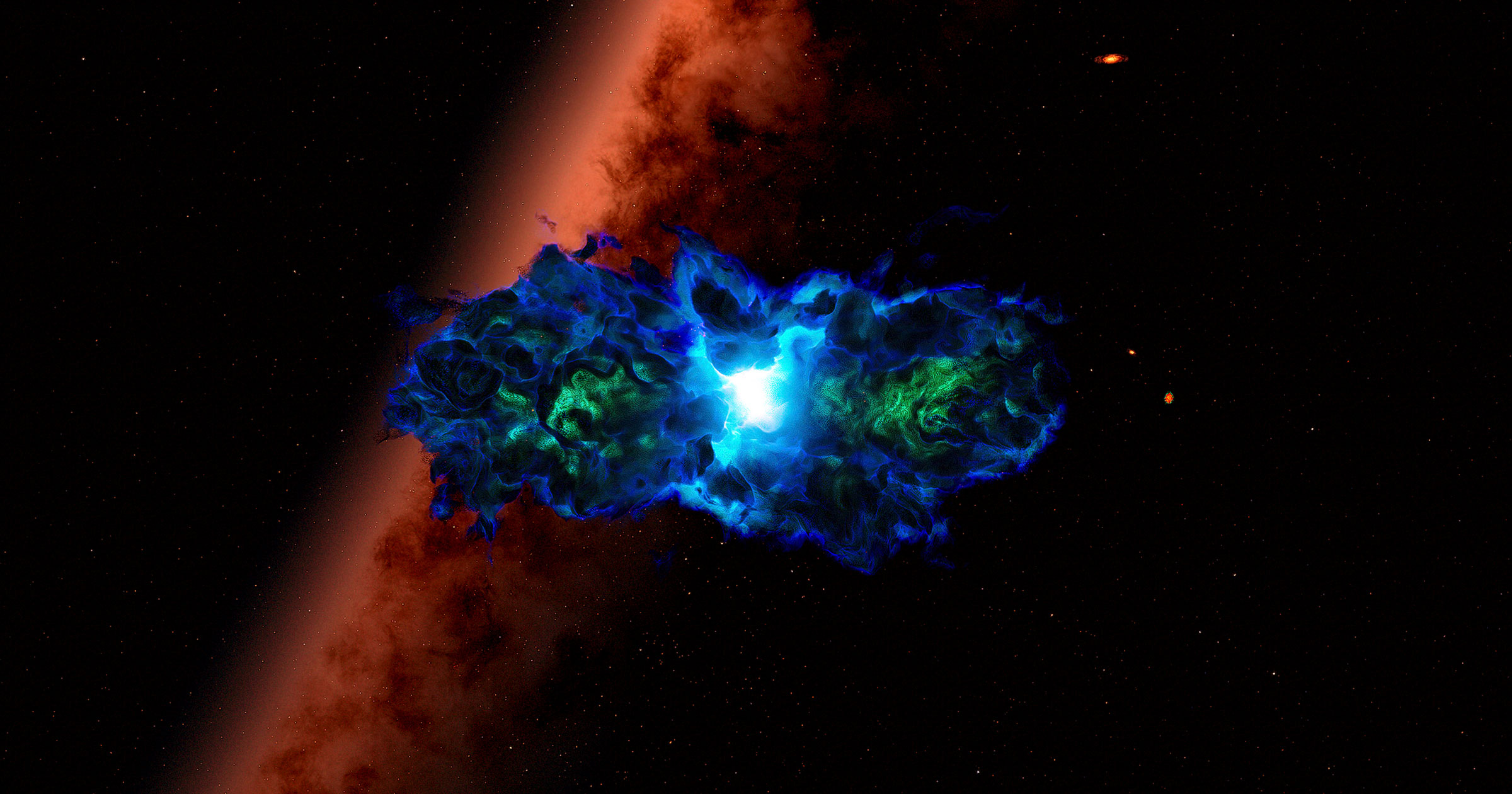NASA’s James Webb Space Telescope (JWST) may have identified the universe’s first “dark stars,” according to a recent study published in the journal Proceedings of the National Academy of Sciences. These primordial celestial bodies, composed primarily of hydrogen and helium, differ significantly from conventional stars powered by nuclear fusion. The findings suggest that shortly after the Big Bang, around 300 million years later, supermassive dark stars could have existed, fueled by dark matter before ultimately self-destructing.
Study lead and astrophysicist at Colgate University, Cosmin Ilie, described these supermassive dark stars as exceptionally bright and large structures, primarily consisting of hydrogen and helium. He explained that they maintain their size against gravitational collapse due to the small amounts of self-annihilating dark matter contained within them. Dark matter is an elusive substance that scientists estimate comprises approximately 25 percent of the universe’s total mass. Despite its presumed prevalence, its presence has yet to be directly measured; its existence is primarily inferred through its gravitational effects on observable matter.
The possibility of supermassive dark stars could provide explanations for the unexpected brightness and abundance of galaxies detected by the JWST in the distant universe. The resultant supermassive black holes from these dark stars may also clarify the formation of distant quasars, which are remarkably luminous galactic cores powered by black holes at the centers of galaxies.
The concept of dark stars originated in the late 2000s, with researchers proposing that they could arise from Weakly Interacting Massive Particles (WIMPs), a leading candidate for dark matter. These particles are believed to annihilate each other, generating heat and producing brilliant light similar to that of conventional stars. Researchers suggest that the conditions shortly after the Big Bang were optimal for the formation of these dark stars.
Co-author and astrophysicist at The University of Texas at Austin, Katherine Freese, noted, “For the first time, we have identified spectroscopic supermassive dark star candidates in JWST, including the earliest objects at redshift 14.” This redshift indicates that these candidates are located over 13 billion years away, making them pivotal in understanding the early universe.
Freese emphasized the significance of these dark stars, stating that they could weigh over a million times more than the Sun. Such early dark stars are crucial not only for understanding dark matter but also as potential precursors to the supermassive black holes identified in JWST imagery, which have been challenging to explain.
In 2023, Freese and her colleagues identified several candidates for supermassive dark stars using the JWST’s Near-Infrared Camera (NIRCam), which captures high-resolution images in near-infrared wavelengths. More recently, data from the telescope’s Near-Infrared Spectrograph (NIRSpec), designed to analyze the earliest days of the universe, has become available for exploration.
The latest paper builds on previous findings by utilizing NIRSpec data to identify four spectroscopic dark star candidates, one of which is now recognized as the second most distant object ever observed. Ilie and his team have potentially discovered a “smoking gun” signature of a dark star, marked by a “1640 Angstrom absorption dip” in the spectrum of one candidate. An Angstrom is a unit of measurement often used in the context of light wavelengths, equal to one hundred-millionth of a centimeter.
Despite these promising findings, researchers acknowledge that considerable investigation remains before confirming the existence of supermassive dark stars in the early universe. Nonetheless, these discoveries could illuminate the enigmatic nature of dark matter, one of the most persistent mysteries facing astronomers today.





































































